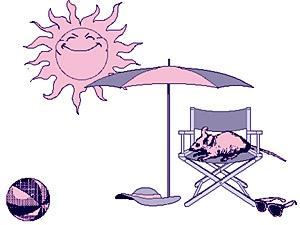
by Sharon Beder
Introduction
Human Skin Cancer
Sunscreen and Fabric
The Mouse Model of Cancer
Studies Using Skin Tissue
Drugs and Sunlight
Plant and Algae Growth
Conclusion
Glossary
Bibliography
Side Effects from Drugs
There are problems with side effects from some of the anti-cancer drugs already in use. Interferon gamma for instance, which is a cytokine, has been used as a treatment for some cancers and also for patients who have very bad warts, which are a type of skin tumour. But it gives a flu like illness and is not the most pleasant drug to be using. It is also incredibly expensive. Barnetson hopes cheaper models can be developed that also have less side effects. He thinks this might happen with cytokine by developing a treatment using 4 or 5 different cytokines at the same time instead of giving high doses of just one cytokine. This is what has happened with chemotherapy. Previously a patient would be given very high doses of cytotoxic drugs but now they are given about 4 drugs of lesser doses and their side affects are much less.
Retinoids also have side effects and that is something that is described every now and then in the mass media. One of the main side effects of retinoids at the moment is that they cause birth defects. Even so patients with psoriasis and acne are still given them. When these patients are women they are put on birth control pills as a way of getting around the problem.
“Once you stop taking them these side effects probably won't last very long afterwards,” says Barnetson. “The oral retinoid probably doesn't have this effect. It is a distant cousin which probably doesn't cause birth defects, but there has not been enough studies on that yet. Obviously that is a great worry and as the newspapers have described, it is worse than thalidomide. When we give it to patients we have to make sure they are unlikely to be conceiving children.”